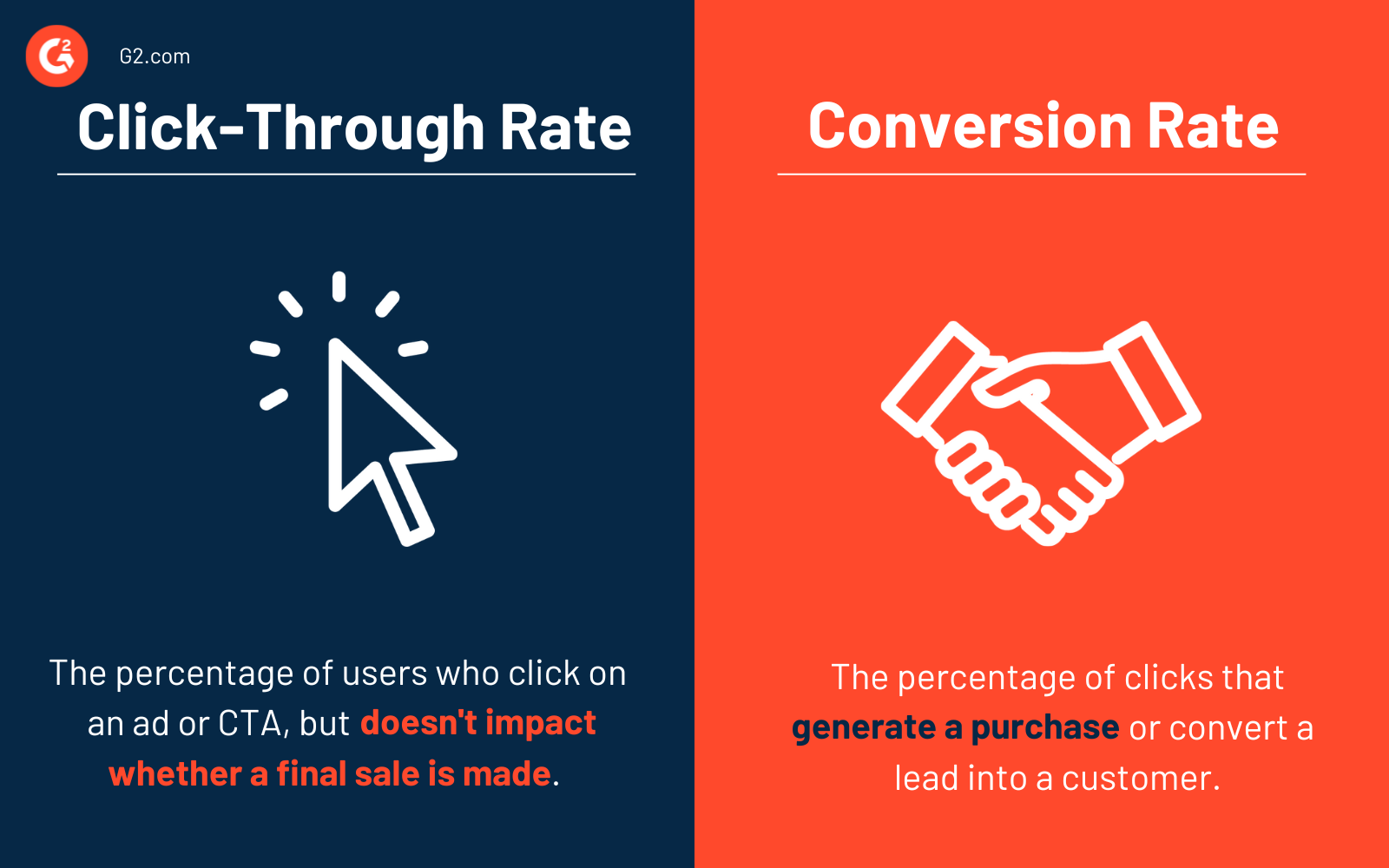What is click-through rate?
The click-through rate, or CTR, is a measurement that shows the percentage of users who see a call to action (CTA) button or link and click on it. Rather than individual users, this measurement is based on numbers of impressions and how many of these impressions resulted in a click.
Hundreds of different factors affect a CTR, from the business’s industry and competition to the type of click being measured. For some forms of advertising, like pay-per-click or social media paid ads, the CTR can have an impact on the overall quality score assigned to the campaign, which plays a critical role in determining how often an ad is shown to a target audience.
CTR remains one of the most important metrics tracked by digital marketing and advertising services as it’s used to gauge how effective or successful a marketing campaign is. The higher the CTR, the more effective the campaign is believed to be because it shows that a higher percentage of people who see the CTA, are interested enough to take another step and click on it.
How to calculate the click-through rate
To calculate the click-through rate, divide the number of times a call to action or ad is clicked by the total number of impressions or views on that CTA. Then multiply by 100 to make a percentage.
Click-through rate = (Total measured clicks / total measured impressions) x 100
For example, if 500,000 people see a social media ad and 4,000 people click on it, the click-through rate is 4,000 divided by 500,000 which is 0.008. Multiplied by 100, this is a click-through rate of 0.8%.
The average click-through rate for a social media ad is around 1-2%, while a good email click-through rate is between 2% and 5%.
Click-through rates and their influences
The factors that determine a click-through rate depend on the type of click being measured. These can include:
- Images used in ads and email marketing. The written copy of a digital ad or email can be incredibly enticing, but the image for the CTA is just as important. Some images draw a user’s attention and encourage them to click, while others could be off-putting and make the user keep scrolling.
- Placement of CTA buttons. If users don’t know what steps to take next, they’re more likely to leave a site or delete an email without any further action on their part. CTAs should be highly visible, with clear information about what a user can expect to find on the next page when they click.
- Ad relevancy and industry. CTRs for digital ads are usually much lower than website or email clicks. Advertising that doesn’t make sense for the business or isn’t clear to users results in weak CTRs. Over time, advertising platforms may deprioritize these ads in favor of better performing options from competitors, which can drop CTR even further.
Benefits of understanding click-through rate
Marketers should pay close attention to CTRs across all digital advertising and organic marketing channels to develop more effective campaigns. CTR gives a good indication of:
- The content users like most. When website visitors who see an ad enjoy the content they're viewing, they’re more likely to take further actions. A high CTR on an email, ad, or landing page CTA suggests user expectations are being met.
- Digital designs that are working well and those that aren’t. High and low CTRs show areas that need improvement when it comes to user experience (UX) design. While CTR isn’t the only factor that should drive design decisions, using A/B testing or heatmaps in conjunction with CTR information leads to more successful marketing campaigns.
- If advertising is focusing on the wrong audience. Sometimes it’s not the creative advertising itself that’s the issue but the users being targeted. A consistently low CTR, even after numerous design adjustments, could be a sign that the audience isn’t receptive and that the product or service isn’t right for that particular group.
Best practices for improving click-through rate
As CTR impacts business-critical results like return on investment (ROI), looking for ways to improve is always a good goal. Depending on the type of marketing campaign, refinements could include:
- Optimizing social ads with different hashtags. Researching trending or relevant industry hashtags can help advertising or organic posts appear to a wider target audience who aren’t currently aware of the business.
- Testing different headlines on digital ads. Using A/B tests to see which headlines are most appealing to an audience can significantly increase CTR over the length of a campaign.
- Changing the CTA on a landing page or in an email. Any action required from a user should be clear and inviting. Keep the language as specific as possible, rather than falling back on unhelpful, generic messaging like “click here.”
- Updating the visual design of a webpage or ad. Running tests to see which are most effective for campaigns that include visual elements like buttons, colors, or photos, can also drive improvements in CTR.
Click-through rate vs. conversion rate
It's common to confuse the click-through rate with the conversion rate, but there are key differences between the two.

The click-through rate is a measurement of the percentage of users who click on an ad or CTA, but ultimately doesn’t have any bearing on whether a final sale is made. Conversion rates are the percentage of clicks that generate a purchase or convert a lead into a customer. Although both metrics are important for understanding the success of a marketing campaign, conversion rates are more closely tied to a company’s monetary value.
Track marketing campaign click-through rates and gain insight into user behavior with product analytics software.

Holly Landis
Holly Landis is a freelance writer for G2. She also specializes in being a digital marketing consultant, focusing in on-page SEO, copy, and content writing. She works with SMEs and creative businesses that want to be more intentional with their digital strategies and grow organically on channels they own. As a Brit now living in the USA, you'll usually find her drinking copious amounts of tea in her cherished Anne Boleyn mug while watching endless reruns of Parks and Rec.




















